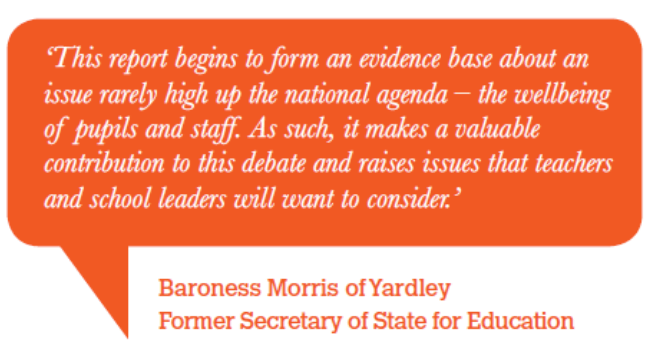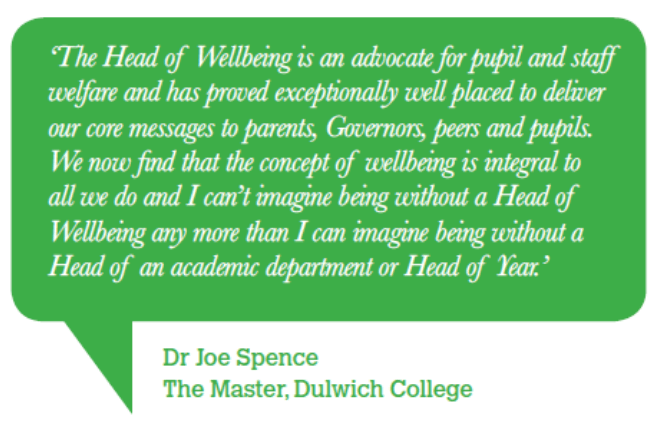Head of Wellbeing: An essential post for secondary schools?
Julia Manning & Jon Paxman
The ‘Head of Wellbeing’ concept was informed by four key considerations. The first was opinion from education professionals who see a clear need to raise wellbeing support within the whole-school community, for both pupils and staff. The second was the wide evidence base that acknowledges the health benefits – and economic sense – of prevention and early intervention. The third was that pupil wellbeing support is not always widely available, meaningful and coordinated: it is all too easy for schools to turn wellbeing initiatives into tick-box exercises. And the fourth, in an age of rising demand, sustainable health and wellbeing support has to include an ‘asset-based’ approach, drawing upon the skills, knowledge, connections and potential in a community.

Key findings
A rapid evidence review of published literature revealed several key strategies to improved whole-school wellbeing, including:
- regular measurement of pupils’ wellbeing;
- staff training on identifying early warning signs of mental health illness in young people (especially deriving from stress, bullying, family breakdown and abuse);
- staff training on stress-coping strategies and work-life balance;
- increased parent education (via schools) on child health and wellbeing;
- more effective wellbeing education (PSHE, SRE, other), especially around nutrition, sex and relationship education, emotional intelligence, stress coping strategies, resilience and other ‘soft life-skills’;
- greater engagement of young people in physical activity through a broadening of opportunities.
Disclaimer
This report was funded by an unrestricted educational grant from Nuffield Health. 20/20health retained editorial control and the views expressed in the report are those of the authors alone.

